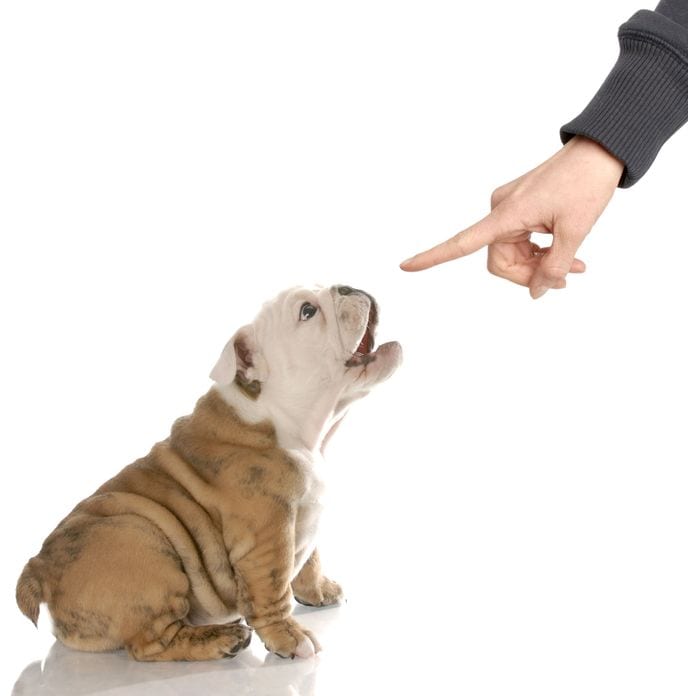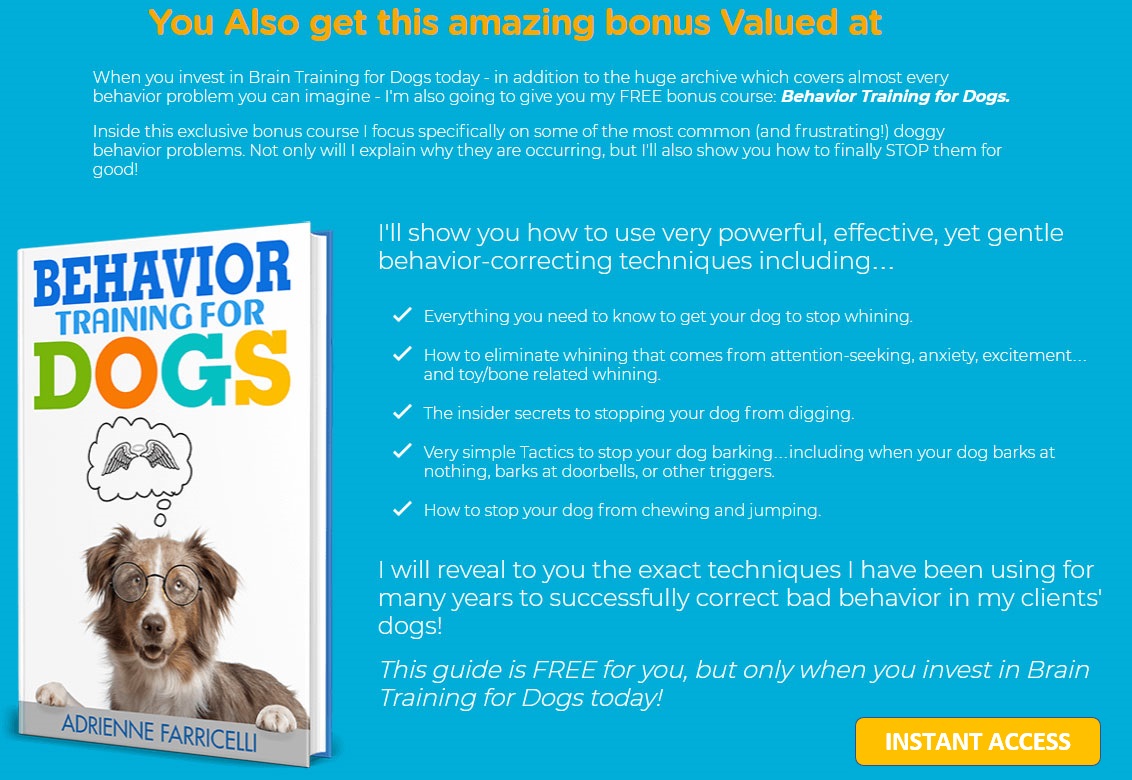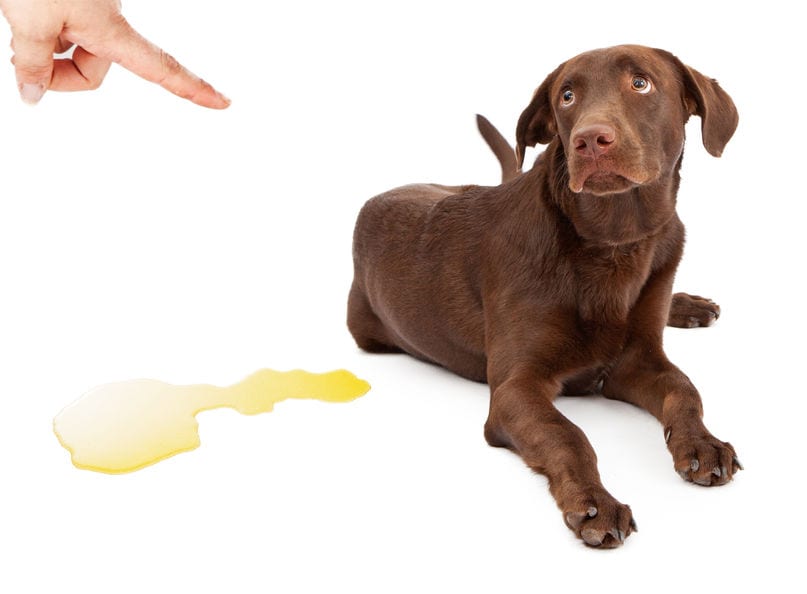Punish a dog
Your dog is doing stupid things and you don't know how to make him understand that this is not what you expect? How to "punish" your dog: is it useful? How to make sure that the punishment is fair, consistent and effective? This is what we will see!
First of all, it is important to understand how the dog learns in order to know how to teach him what behavior is OK and what behavior is not.
The dog learns by operant conditioning. That is, if an action is followed by a reward, he will repeat it. On the other hand, if an action results in a punishment (something unpleasant for the dog), he will try to avoid that behavior.
The goal of training is not to make the dog permanently avoid the behavior! No, on the contrary, the goal is that he understands which attitude allows him to obtain satisfaction.
How to punish your dog: the ideal scheme
To do this, it is important that the punishment is not traumatic for the dog, but simply fair and consistent for him. And for this to happen, it is essential to always follow a punishment with a reward so that the following association is clear to your dog:
> Action A = Unpleasant consequence
> Action B = Pleasant consequence
> Repetition of Action B
> Decrease then suppression of action A
To make it clear, here is the outline to follow when you want to punish your dog for bad behavior:

The punishment
• The punishment should not be violent, it should be fair and consistent with the bad behavior of your dog. Never hit your dog, it would only have the effect that your dog fears you and doesn't trust you anymore.
• The punishment must be systematic! Let's take the example of jumping (either on you or on your guests), if sometimes when your dog jumps on you he gets satisfaction (you laugh about it, you pet him to say hello, etc.) while sometimes you scold him (because he is dirty and you are in your work clothes for example)... Well, your dog will not consider you as a very reliable reference being And he will repeat in any case the behavior of jumping "in case" he falls on a day when you are nice!
So, if you forbid a behavior, forbid it systematically and do not be in a confrontational and violent relationship with your dog. You will certainly notice that this attitude does not usually solve the problem. It simply impacts the relationship you have with your dog, and not in a good way.
Stopping the sanction
The punishment should not last too long at the risk of "losing" its effectiveness. Indeed, you should know that a dog takes an average of 10 minutes to move on. So, if the punishment lasts too long (more than 10 minutes), your dog will not even know why he is being punished.
It will then seem unfair and your relationship will be weakened. So don't make the punishment last too long. We will then see the different forms of "punishment" but for example if you isolate your dog, do it for 5 minutes, not more.
The reward
It will always be necessary to follow a punishment with something positive so that the dog understands what he is allowed to do and what he is not allowed to do. And so that he understands which attitude, which action allows him to really get what he wants.
Let's go back to the example of jumping: your dog jumps on you, you send him to the basket to signal a return to calm (we'll see this later) and when he's done that, you call him to pet him (which is what he wanted when he first made contact). Thus, your dog understands that jumping does not allow him to obtain what he wants, on the other hand, a return to calm and a contact at the initiative of the master: that is OK.
As you can see, the most important thing to do is to redirect the dog towards a behavior that will allow him to get satisfaction.

Possible sanctions
• Ignore your dog (don't look at it, don't talk to it, don't touch it)
This punishment is to be used when your dog asks for your attention in a very insistent way. If you answer him, even if it is only to scold him, your dog will see this as an answer to his request for attention, even if you consider this as a punishment, it will not be one for your dog. To respect the three points of ignoring your dog (don't look at him, don't talk to him and don't touch him), simply turn your back on him and/or move to another room.
• Send him to the basket
If ignoring him is not enough and he persists in his bad behavior, you can tell him to "go to hell" (of course, the "go to hell" indication will have to be acquired beforehand, in a systematic way). The basket, without being associated with a punishment, will be perceived more as a zone for calming down. As we saw earlier, your dog must understand that it is the owner's responsibility to decide and to initiate contact. Thus, sending your dog to the basket will allow you to regain control of the situation by allowing your dog to settle down and therefore calm down before being able to get what he wanted, when you have decided to do so.
• Isolating your dog in another room
Since dogs are social animals, isolation could be the worst punishment for them. However, in order for this to be truly experienced as a punishment (i.e. a negative consequence following a behavior that he will not want to repeat later), the place of isolation must not be rich in stimulation.
Often, we hear "he wasn't listening to me so I put him outside by himself"... Well, being outside in the garden, filled with smells and a multitude of ways to play and exercise, this is not what we call a punishment. So, if you want to isolate your dog, choose a neutral place, even one with little stimulation, so that your dog understands that the behavior he has adopted causes social isolation (the toilet or the garage for example).
Remember, however, that the punishment should not last too long: 5 minutes may be enough for your dog to understand that it has not acted properly. Also, do not let your dog go if he scratches at the door or barks. He will then understand that this attitude allows him to get satisfaction and it would not be very coherent, you will agree. Finally, when you open the door to your dog, don't continue to scold him but don't give him a big party either: just ignore him and go about your business.
• Verbal/sound annoyance
A simple, firm "heh" may also be sufficient for sensitive dogs. However, you will need to be careful to distinguish the intonations of your voice. A firm "Heh" when he does the unwanted behavior (or intends to do so, we will see later how to anticipate) and a very high-pitched "Yeeeeeees" when he gives up. The "no", although it is a bit of a reflex as a master, should not be part of your canine vocabulary too often because this word simply ends up having no impact.
Then, whether you use "no" or "hey", you should always, and systematically, tell the dog what you want him to do instead. Indeed, it is not enough to punish your dog, you have to make him understand what you expect from him. Do you know the "Pet Corrector"? It is a small aerosol that emits a painless and odorless gas for the dog but which will surprise him and therefore stop him in his behavior. It is often used to prevent bad behavior and/or intentions, such as stealing food for example.
Do not allow him to get satisfaction
This sums up everything that we have just detailed above. Clearly, your dog must understand that the behavior he adopts to get satisfaction is not the right one. It's up to you to make sure that he understands what behavior allows him to get.
For example, if your dog barks and scratches at the door to go out in the garden, start by ignoring him (so that he understands that this behavior does not get your attention). If that's not enough, send him to the basket so he understands that a return to calm is necessary.
Then, invite him to go out by asking him to sit down first, for example, before he can go out. This way, he will understand that a calm attitude allows him to get what he wanted in the first place and not the one that consists in scratching and barking.
Anticipation to avoid punishment
The best solution is of course prevention! It will always be easier to stop a dog in an intention to do something rather than in an action already in progress.
To do so, you will have to observe the dog carefully, meet all its needs so that it does not have to beg for anything and, above all, have a fair and coherent attitude so that the dog understands that it is up to the master to decide and to be the one to initiate all its actions and gestures.
This may seem strict but it will reassure the dog and put him in serene conditions because he will know that he can have blind trust in his master.

